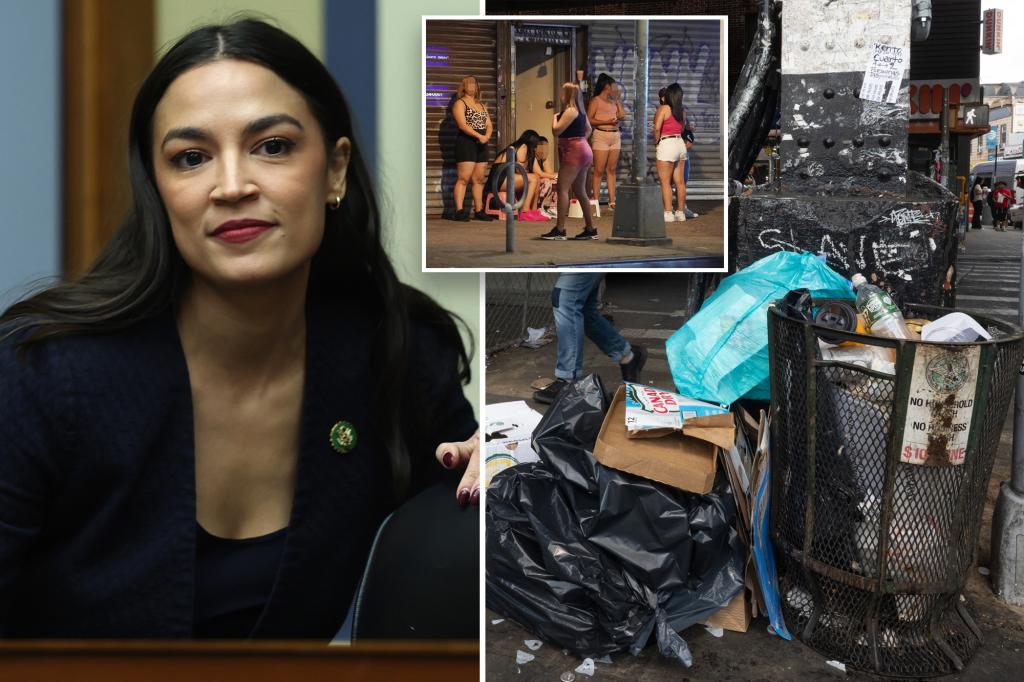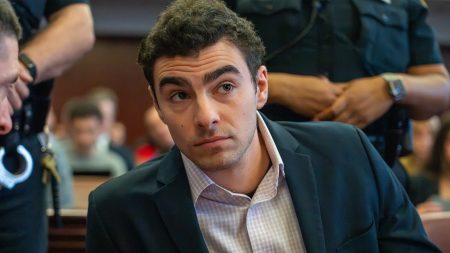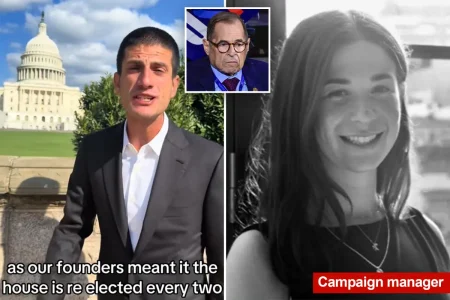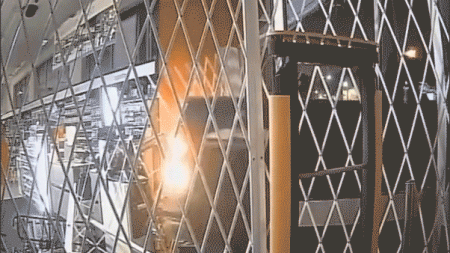AOC’s Trash Cans: A Band-Aid on Roosevelt Avenue’s Deeper Problems
Representative Alexandria Ocasio-Cortez recently took to social media to announce a victory for her Queens district: the installation of dozens of new trash cans along Roosevelt Avenue. “After meeting with local vendors and business owners, my office reached out to the New York City Department of Sanitation about the need for more trash cans along Roosevelt Avenue,” she wrote on August 8. “Thanks to their quick response, 51 trash cans were installed! Grateful for their partnership in keeping our community clean!” The Sanitation Department later clarified that they had actually replaced 48 missing trash baskets between 82nd Street and 111th Street, describing it as “routine replacement” that happens across the city when bins are damaged or go missing. AOC’s office maintained that business owners had “directly asked her for help in getting more trash cans” during a summer roundtable discussion she hosted, presenting the initiative as a direct response to constituent needs.
However, the announcement drew immediate criticism from local residents and community leaders who view the trash can initiative as ignoring Roosevelt Avenue’s more pressing problems. The area has become notorious for what locals call the “Market of Sweethearts,” a euphemism for the rampant prostitution that plagues the neighborhood. Residents have been vocal about the increasing presence of johns, pimps, and sex workers along the avenue, issues they feel have been exacerbated by the city’s migrant crisis and potential organized crime connections. Ramses Frias, a Republican candidate for City Council in Queens’ 25th District, didn’t mince words: “Celebrating garbage cans is like putting sprinkles on s–t and calling it a birthday cake. It’s all for show.” Another resident, John Lomonaco, commented on Facebook, “That’s all you’re worried about on Roosevelt Ave?” This sentiment reflects a growing frustration that elected officials are addressing superficial problems while ignoring the deeper social issues impacting the quality of life in the area.
The criticism extends beyond the focus on trash cans to what many perceive as AOC’s general absence from her district’s most troubled areas. Rosa Sanchez, president of the Restore Roosevelt Avenue Coalition, expressed this sentiment earlier in the summer: “I have not personally seen Ocasio-Cortez since she’s been elected. I have not seen her in the community. I have seen her in a parade — that’s it.” This perception of absence is particularly stinging for residents who have been actively seeking help from authorities, even going as far as urging the FBI to investigate potential organized crime connections to the area’s prostitution problem. Critics point out that AOC has previously defended prostitution as “honest work” and advocated for its decriminalization, positions that some feel may contribute to her reluctance to address the issue directly in her district. Meanwhile, her office highlighted that she has requested $500,000 in federal funding for nonprofits helping victims of sexual violence, suggesting she is addressing the broader issue, if not the specific manifestation of it on Roosevelt Avenue.
Even the practical effectiveness of the new trash cans has been questioned by some residents. John Mcgarry shared photos on a Jackson Heights residents’ Facebook group showing the new bins already overflowing with garbage. “Real talk, we need more Sanmen, or more overtime for the ones we do have,” he commented, suggesting that adding more containers without increasing collection services merely creates new eyesores. This practical criticism highlights a broader theme in the debate: that surface-level solutions often fail to address systemic problems. The overflowing new bins serve as a metaphor for policies that increase capacity without addressing underlying issues – whether in sanitation or in addressing prostitution and organized crime.
The tension over Roosevelt Avenue reflects a larger debate about approaches to urban problems. On one side is a focus on visible quality-of-life improvements like clean streets and proper waste management, which can have real impacts on community pride and public health. On the other side is a push to address the root causes of urban decay – poverty, crime, exploitation, and lack of economic opportunity. AOC’s defenders might argue that improving basic services like sanitation is a necessary step in community revitalization, while her critics contend that such steps are meaningless without tackling the human exploitation happening openly on the same streets. This reflects different philosophies about whether change should start with environmental improvements that might catalyze broader social transformation, or whether the social problems must be addressed first for environmental improvements to matter.
What’s clear from this controversy is that Roosevelt Avenue’s problems won’t be solved by trash cans alone, nor will they be solved without the involvement of all levels of government – from local officials to congressional representatives like AOC. The community’s frustration stems not just from the specific issues plaguing their streets, but from a feeling that elected officials are selectively engaging with easier problems while avoiding the more complicated, politically sensitive ones. As the debate continues, residents of Roosevelt Avenue are left hoping that the attention given to trash collection might eventually extend to addressing the human trafficking, exploitation, and organized crime that they see as the real garbage polluting their community. Until then, many will likely continue to see initiatives like new trash cans as symbolic of a political approach that cleans up the surface while allowing deeper problems to fester underneath.










